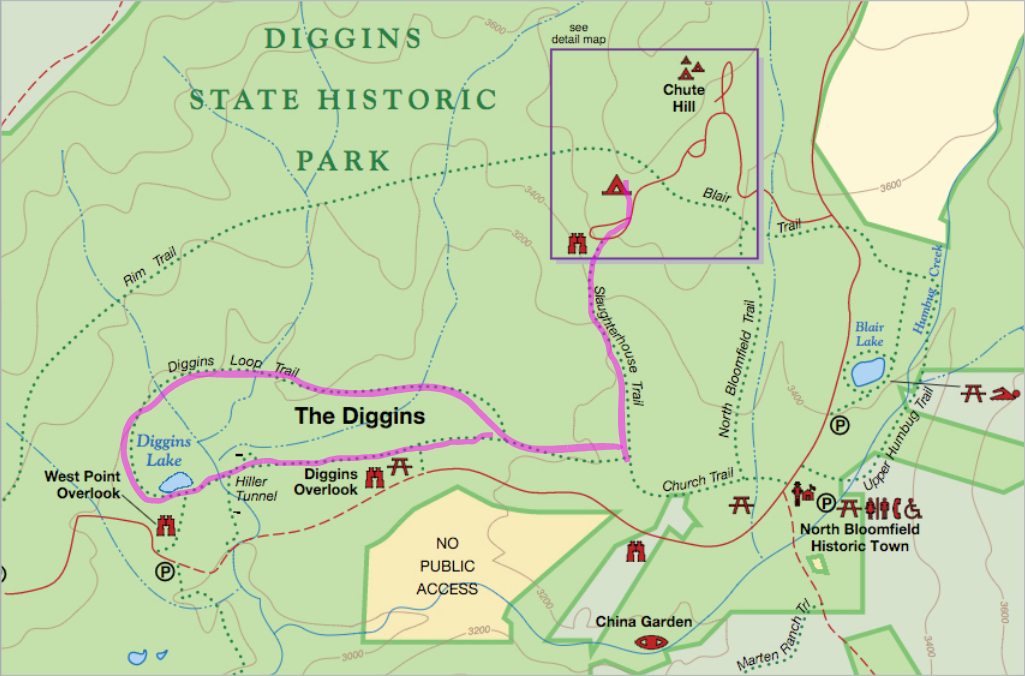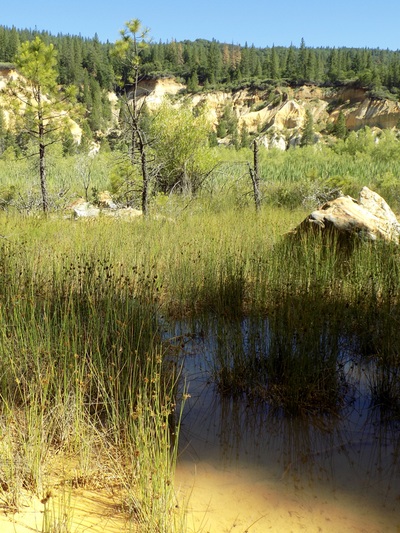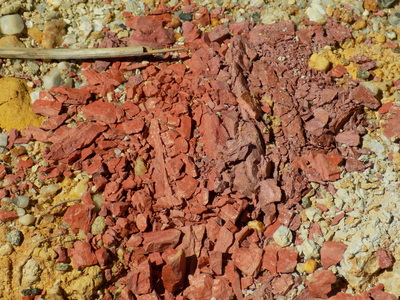|
Malakoff Diggins State Historic Park is a fascinating park that offers visitors a peak back in time to the highs and lows of California's gold mining heyday. Here is a helpful blurb from the state park website: Malakoff Diggins State Historic Park is the site of California's largest "hydraulic" mine. Visitors can see huge cliffs carved by mighty streams of water, results of the gold mining technique of washing away entire mountains to find the precious metal. Legal battles between mine owners and downstream farmers ended this method. The Diggins themselves are really beautiful. They look like some of the red rock formations in Utah. It is weird to see such formations in Northern California, especially because some of the grounds near the foot of the Diggins are still boggy and marshy. The greatest environmental impact was further downstream from the Yuba River, particularly in Marysville where people died because of flooding. It is easy to forget how devastating the pollution from mining was when what remains of this mine is actually very beautiful. The park also has what is more or less a ghost town. It is definitely worth it to take the ranger-led tour of North Bloomfield so that you can go inside some of the old buildings like the saloon, pharmacy, general store, and a residence. Plus, the park rangers here are the friendliest park rangers I have ever met! See my mom's painting of Chute Campground and my photos of the Diggins after the jump. Slaughterhouse to Diggins Loop Trails I took the Slaughterhouse Trail from Chute Campground through a mixed forest of Ponderosa Pine, incense cedars, and manzanita down to the access to Diggins Loop Trail. I took the south rim of the trail around Diggins Lake and then looped back along the north rim. The south rim of the trail offers better vantage points for photographs, but the north rim allows you to get closer to the Diggins to see the rocks up close. Diggins Lake was really more of a marsh. There was a loud chorus of bullfrogs croaking away when I was there, and one of the original water canons & monitors is still pointed at the chalky cliffs, left behind after the mine was forced to shut down its operations. There was a proliferation of lupine blooming along the trail, and there were butterflies everywhere. It was much hotter in the sunny pit of the Diggins than it was in the shady ridgetop campground. Definitely start your hike in the cool of the morning if you can; wear sunscreen or a hat, and bring lots of water. When you finish your hike, you can cool off by swimming in Blair Lake just north of historic North Bloomfield. The hike I took (in pink on the map above) was more or less 5 miles, round trip; however, it felt more strenuous than that because of the heat in the Diggins. The climb back up Slaughterhouse Trail was significant, but it wasn't too bad because the trail is pretty short. Two things to note:
0 Comments
Leave a Reply. |
Archives
December 2020
Categories
All
|




















































 RSS Feed
RSS Feed
